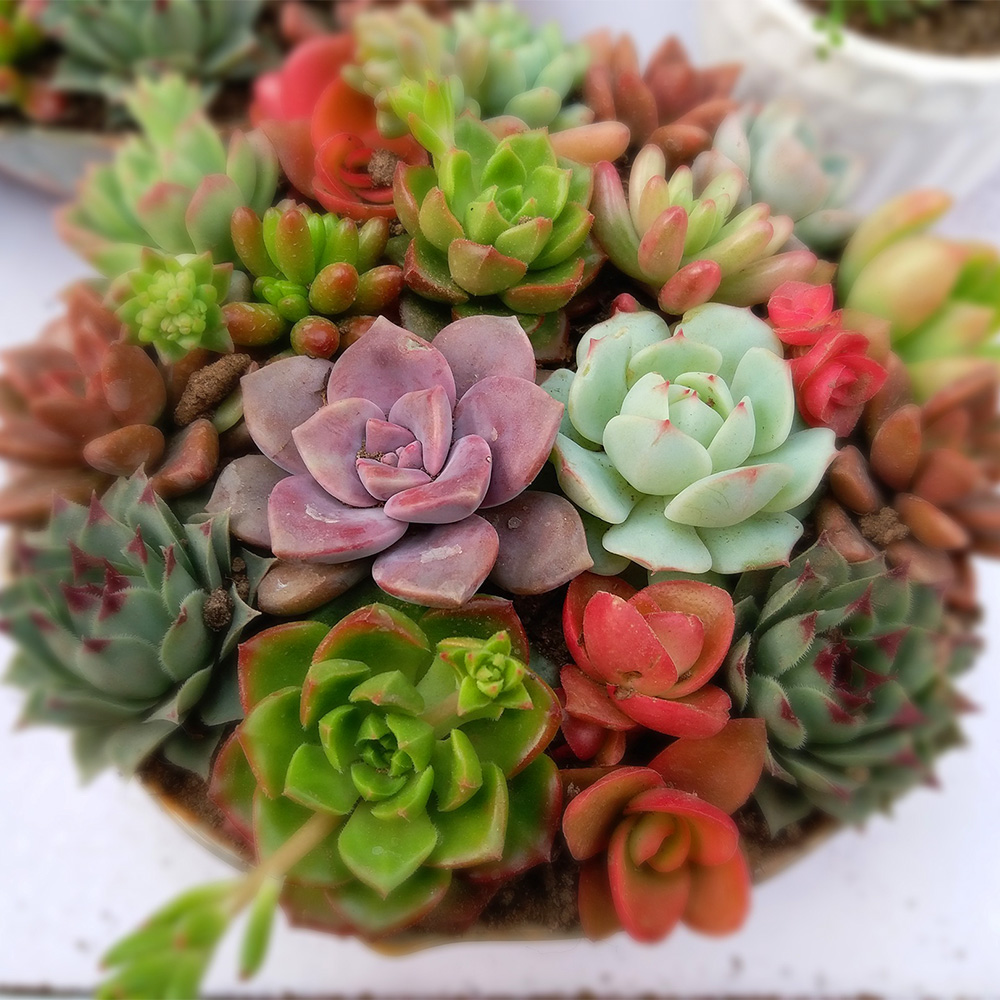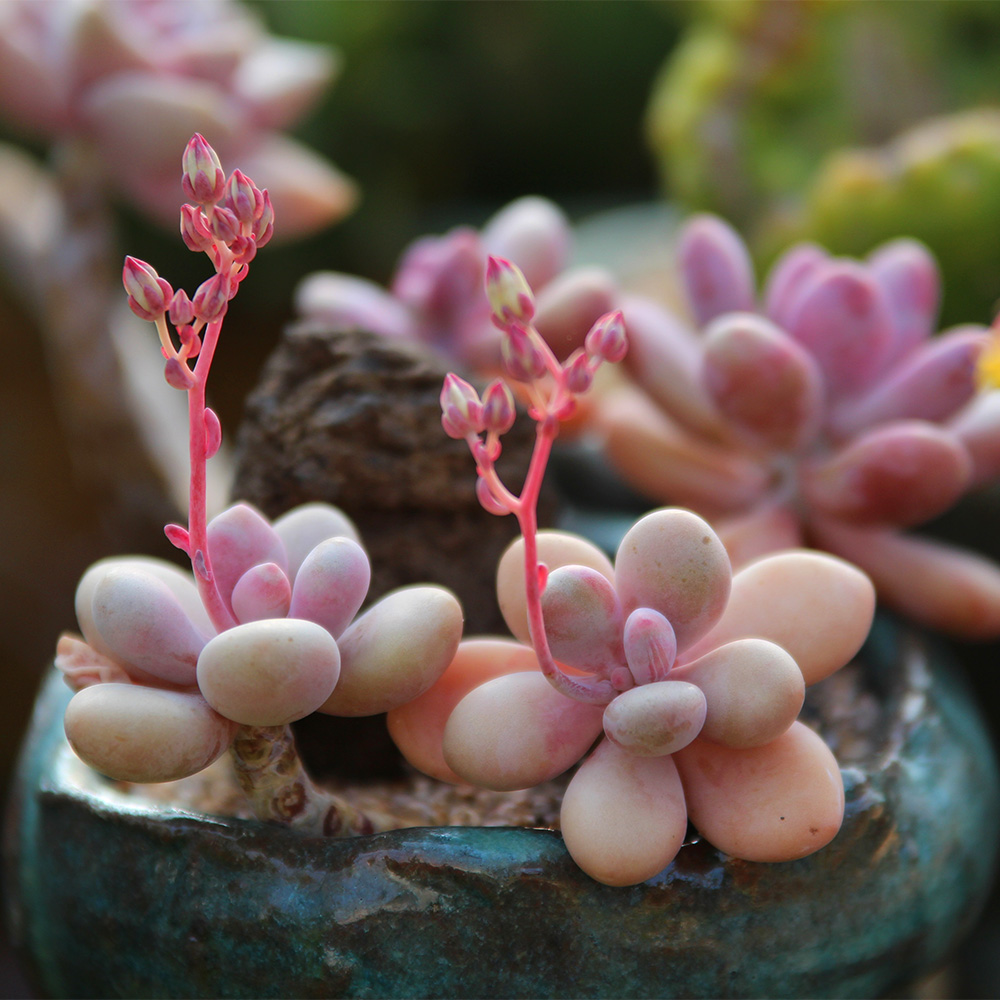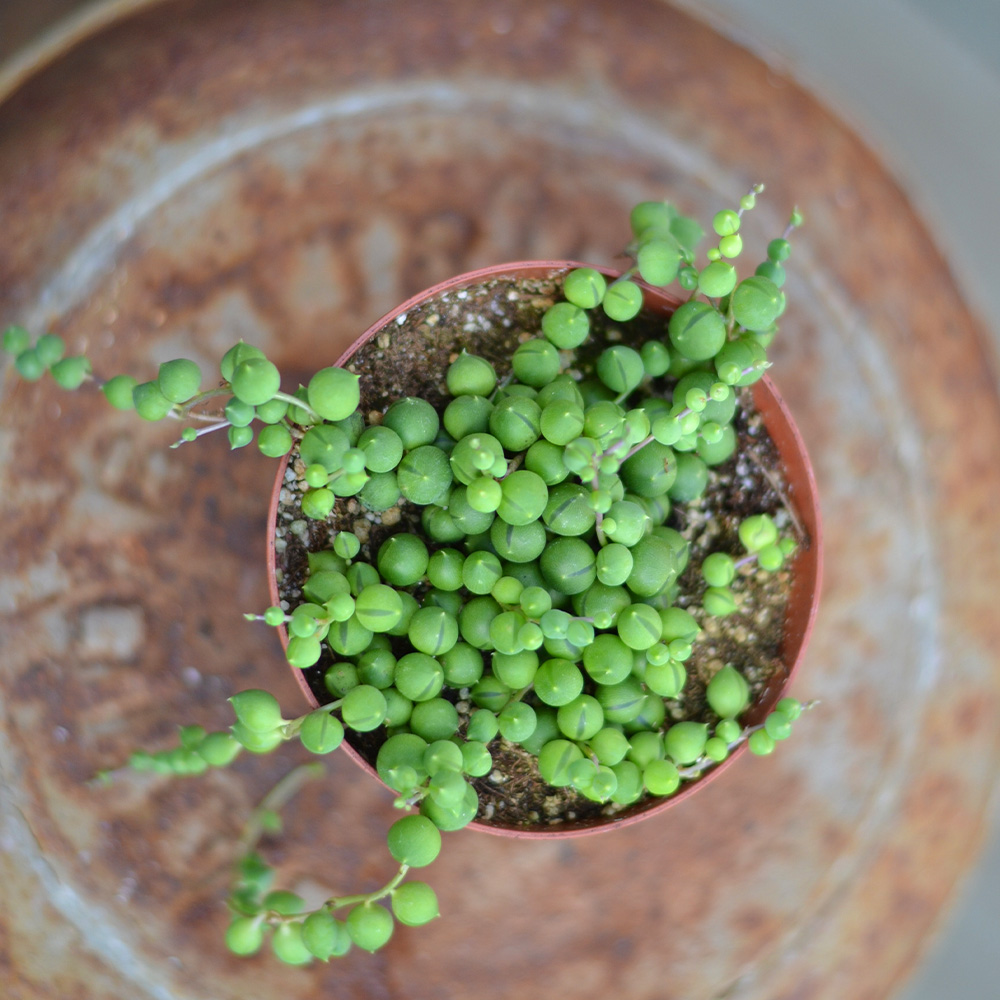Succulents make charming, easy-care additions to your houseplant collection. This popular plant group will add a unique assortment of fleshy, fantastically colored foliage to your home to be enjoyed year-round.
What Are Succulents?
If you are familiar with aloe, agave, jade, or snake plants, you already know some of the most popular succulents. What distinguishes these houseplants from others is their thick, fleshy leaves that store moisture. This allows them to remain healthy with very little water. Succulents are generally slow growers that thrive with neglect. This makes them the ideal houseplant for those with a busy schedule and novice plant parents.
Choosing Succulents
There are so very many captivating succulents offered at your local garden center in a wide range of colors, shapes, and sizes. Large growing succulents and those with rubbery leaves, like the ZZ plant and snake plant, are perfect for growing as a single potted specimen. When choosing a group of succulents to plant together in a container, select various colors, textures, and shapes that appeal to you. Most succulents have similar cultural requirements, making them perfect container mates.
When designing a succulent container garden, the same basic container garden principles apply. You will need a thriller (upright plant), filler (plants to fill in the void), and a spiller (a plant that hangs over the side) to obtain the most pleasing appearance.
Caring for Succulents
Succulents are relatively easy-care plants, but they do have specific needs.
POTS
A pot for succulents must have excellent drainage with one or more drainage holes, as these plants do not like wet feet. Unfinished terra cotta pots make the perfect succulent planter as they are porous, keeping the soil from remaining too moist. Shallow or otherwise small pots are fine for succulents, as these slow growers don’t mind being a bit cramped.
SOIL
Fast-draining soil is a must for succulents. We recommend using a potting soil mix listed specifically for succulents or regular potting soil with the addition of coarse sand or perlite to sharpen the soil drainage further. This will allow the soil to dry out more quickly, making it suitable for succulent success.
FERTILIZER
Indoor succulents require only a mild feeding once a year as growth resumes in the spring. The longer days and increased sunlight will stimulate new growth. It is best to select a fertilizer labeled for succulents and cacti.
SUNLIGHT
Succulents will maintain their compact stature and show off their best color if they receive at least 6 hours of sunlight daily. South or west-facing windows are the best options. Rotating pots once a week is a good idea to ensure straight, even growth. For larger succulent containers, use wheeled stands or coasters so they can be rotated easily.
TEMPERATURE
Indoor succulents do well in typical household temperatures but prefer slightly lower temperatures when their growth slows in winter. At that time, consider moving them to a cooler room.
WATER
While succulents thrive in arid climates, they need proper watering to stay plump and fresh. Allow the soil to dry out between watering. When you do water succulents, water them thoroughly. Do not let the plants stand in water; empty saucers immediately. For larger potted succulents, pot feet, to lift the plants above the saucer, will assist in drainage. Avoid pouring water directly on the fleshy leaves. Instead, water the soil using an indoor watering can.
EASY TO GROW INDOOR SUCCULENTS
Thriller
- Panda Plant (Kalanchoe tomentosa)
Colors: Fuzzy blue-green leaves - Zebra Plant (Zebra haworthia)
Colors: Deep green leaves with white horizontal stripes
Filler
- Houseleeks (Sempervivum tectorum)
Colors: Green, chartreuse, gold, blue, purple, & burgundy - Hens and Chicks (Echeveria species)
Colors: Green, gray-green, silver, black, blue-green, blue, purple, maroon, red, pink, orange, & gold
Spiller
- Burro’s Tail (Sedum morganianum)
Colors: Green, blue-green, blue, purple, & gray - String of Pearls (Senecio rowleyanus)
Colors: Green & variegated white and green
Of course, if you feel adventurous, there are many more exciting succulents to choose from. However, this list provides an extraordinary variety of easy-care, colorful succulents for your first project.






